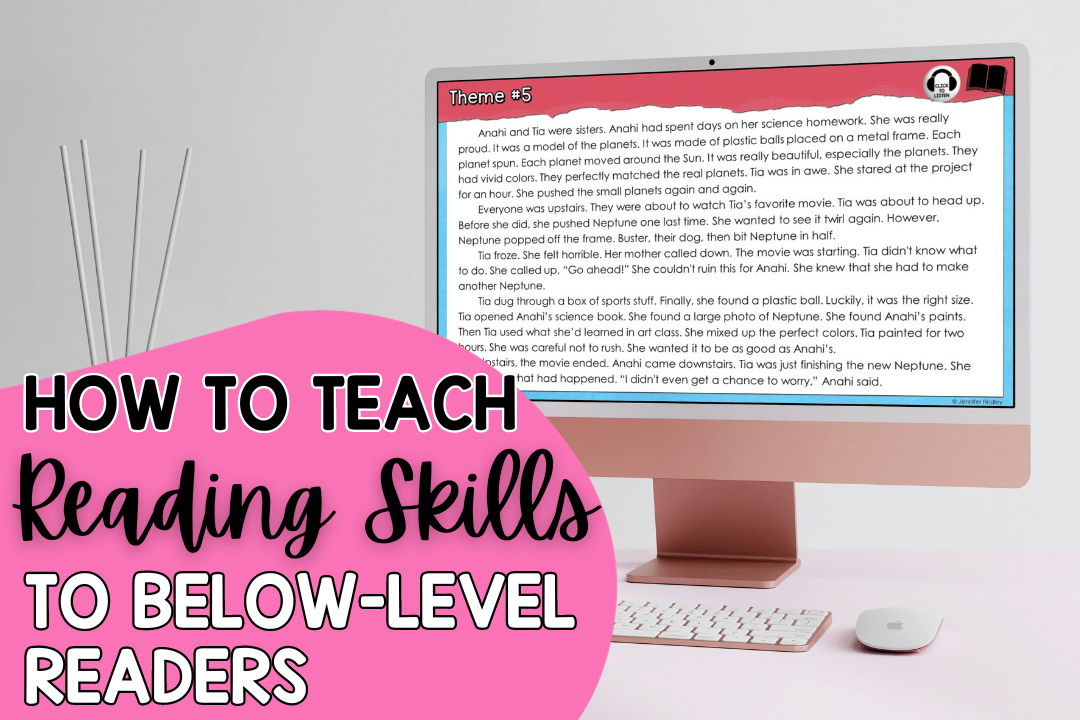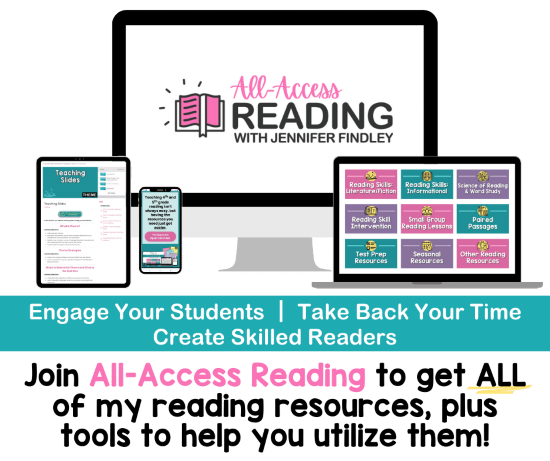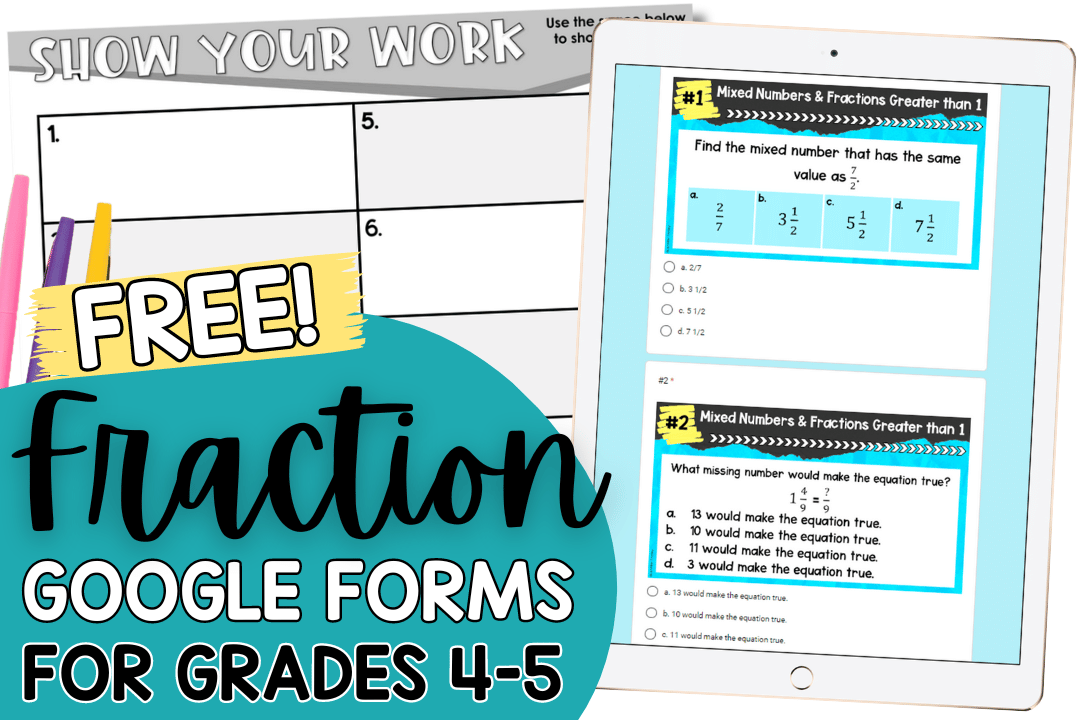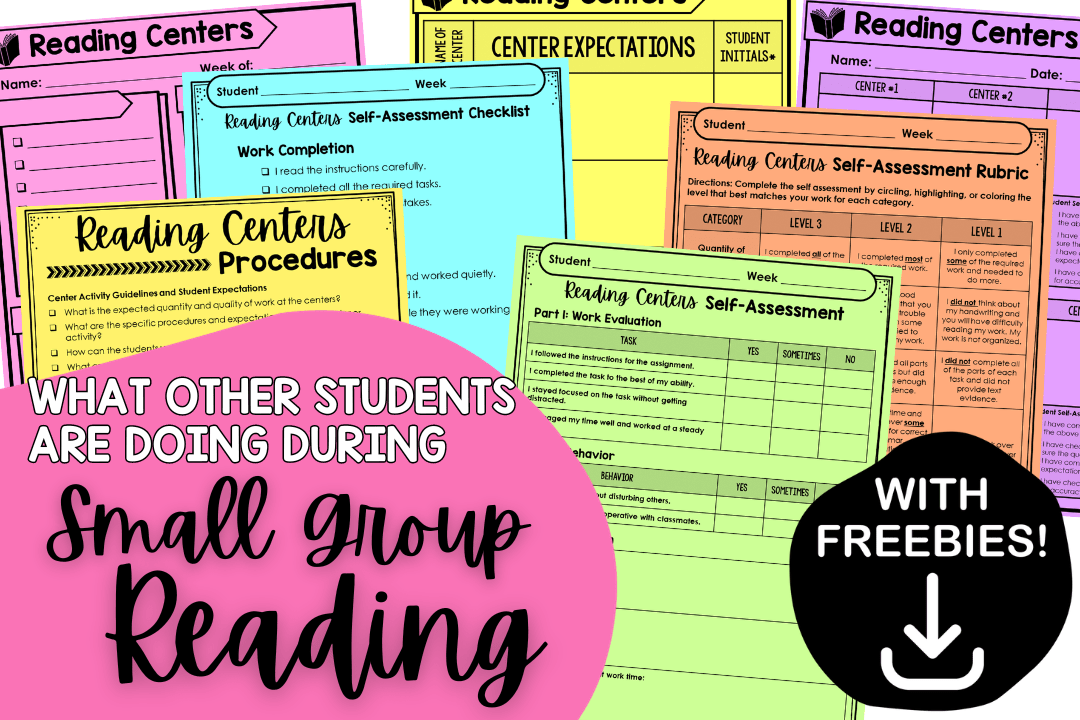It’s definitely a challenge as a 4th and 5th grade teacher to have students who are reading 2+ grade levels below. Unfortunately, it is also a reality for many teachers. One of the most difficult parts is finding a way to teach and have those students practice grade-level skills in a way that is accessible and appropriate for them.
Of course, we want to determine what is holding students back as readers and continue to grow their reading skills. However, we need to be able to still expose them to grade level skills. This will (hopefully) keep them from falling even further behind. In this blog post, I will share strategies to help you teach reading skills to below-level readers.
Strategy #1: Use read alouds to introduce, teach, and practice skills.
Students, even in 4th and 5th grade, love being read to. This can look like reading from picture books, novels, or even passages (printed or displayed digitally).
Reading aloud is an effective strategy to expose students to grade level text in a way that reduces their cognitive load.
Here is how reading aloud reduces the cognitive load to benefit lower-level readers:
- Students are not having to do the mental work of decoding.
- The comprehension process is scaffolded through discussion, as well as any prompting or scaffolding that you provide while reading the text aloud.
By reading texts aloud, you are essentially making grade-level text accessible to all students. Then they’re able to apply those grade level skills to that text.
You can use slides to display the text as you read aloud to your students. Providing students with their own copies of the text to follow along as you read aloud will also enhance their engagement and understanding.
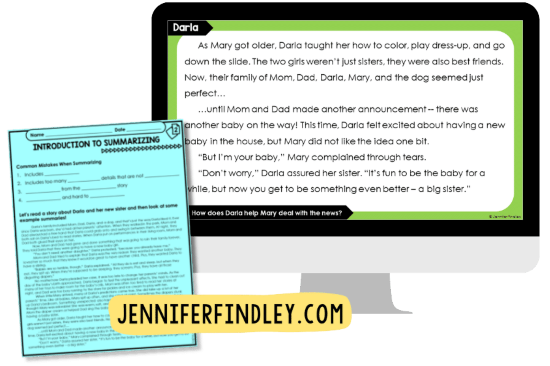
Who this works for: This teaching strategy works for students who struggle with decoding and language comprehension (including vocabulary if vocabulary is scaffolded through the read aloud).
Strategy #2: Use a variety of text lengths and lots of short texts.
Do you have students who can decode and read fluently but who find it tough to keep up with long texts?
If so, make sure you are using a blend of short and slightly longer texts. This way, you’re addressing the attention span issues but also gradually building students’ reading stamina.
Here’s why this teaching strategy helps:
- Short texts are less intimidating for students who struggle with comprehension, reading stamina, or are reluctant readers.
- Each completed text gives students a quick win and sense of achievement.
- With shorter texts, students can focus more on applying and practicing the reading skills without getting overwhelmed.
- Starting with short texts and gradually moving to longer ones helps build reading stamina in a manageable way.

Who this works for: This teaching strategy works for students who struggle maintaining comprehension and/or stamina with lengthier texts.
Strategy #3: Use audio recordings of texts to support students.
Not every student is a fan of silent reading. This is where audio recordings come into play. By using tech tools or audio recordings of passages, students can listen to stories while following along.
Here is why this teaching strategy works well for below-level students:
- Listening to a story supports students who struggle with decoding.
- Students are able to access text in a more engaging way.
- This strategy can also support fluency as students hear how fluent reading sounds.
Who this works for: This teaching strategy works for students who struggle with decoding and/or fluency.

Strategy #4: Use stories and texts at the students’ reading levels.
The final strategy is to use stories and texts that are at the student’s grade level for practice. The key to this strategy is that the stories need to also be engaging and “meaty enough” to practice and apply the specific grade-level skills.
This strategy is perfect for independent practice of reading skills and targeted small group skill instruction.
Here’s why this teaching strategy helps:
- Using texts at (or near) the students’ reading level will allow your instruction to truly focus on teaching and/or practicing the reading skill.
- By using texts that students can comfortably read, they feel more confident and can focus on applying grade-level skills.
- Students will be more engaged in the lesson and in discussions if they can read text with relative ease.
For ready-to-go resources for grade-level skills with stories at 1st-3rd grade reading levels, check out these intervention resources.
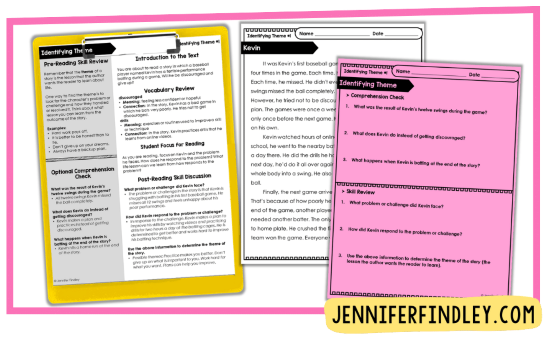
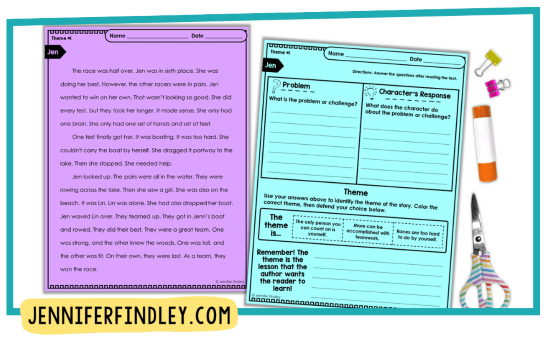
Who this works for: This teaching strategy works for students who struggle with decoding and language comprehension of grade-level texts. (This assumes that the lower-level texts use easier to decode words, simpler vocabulary, and less complex sentence structures.)
Bringing It All Together – Maximize Effectiveness by Combining All the Strategies
Combining all of the strategies in this post will give all of your readers a chance to learn and practice grade-level skills with both complex texts (read aloud) and texts they can independently read.
For example:
- You can begin your skill instruction using a variety of text lengths read aloud to students to introduce and teach the skill. (Strategies #1-2)
- Use lower-level texts that students can actually read to practice the same skills independently or in small groups. An added bonus would be if those same texts also include an audio component for additional support for independent practice. (Strategies #3-4)
- For your grade-level readers, assign them passages on grade-level to practice the same skills. Need a variety of passages and small group activities for your on-grade level readers? Check out this bundle.
Need teaching resources to make this happen?
Check out these teaching resources that were featured on this post. The teaching slides are perfect for strategies #1 and #2. The intervention resources help you implement strategies #3n and #4 (with ready-to-go professional audio of the stories).
Need more reading resources and support? Join All-Access Reading!
If you are wanting to have instant access to all of the reading resources featured on this post + so many more, I invite you to join my monthly reading membership. It will give you access to every reading resource and all future ones.
This membership will give you the tools to meet the needs of all of your readers.
Ready to join or want more details? Click here to check out All-Access Reading!
